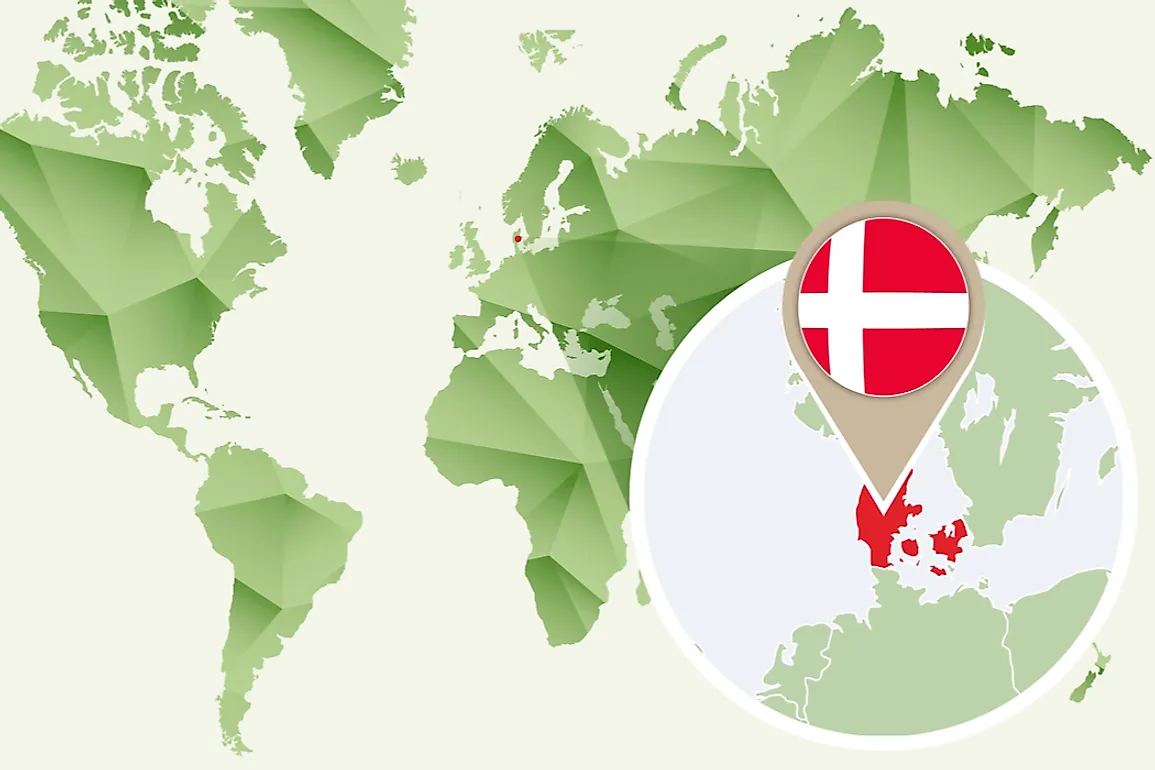What Continent Is Denmark In?

Denmark is one of the Nordic countries and it was founded as a country in the year 980. Located in the northern parts of Europe, this country is the southernmost of the Scandinavian countries. It sits between the Baltic and North seas and is renowned for its extensive rolling plains and the picturesque fjords. Denmark is the 135th largest country in the world and shares a land border with only one other country, Germany.
Geographic Location
Denmark is located south of Norway and southwest of Sweden and borders Germany to the south with their border running for 42 miles long. The Danish territory is made up of the Jutland peninsula and other 443 named islands. The number of Danish islands measuring more than 1,000 square feet in area are 1,419. As of January 2007, only 72 of these islands were inhabited. Among the largest of the Danish islands are Funen and Zealand. Denmark has an extensive network of bridges connecting the larger islands. Zealand is connected to Sweden by the Oresund Bridge while the Great Belt Bridge links Funen to Zealand, and the Little Belt Bridge links Funen to Jutland. The smaller islands are connected to the rest of the country by ferries or small aircraft.
Size of Denmark
The Danish shoreline on both the North and Baltic seas is about 5,440 miles long. The coastline is however considered to be much shorter because it would not include the shores of a majority of the 1,419 offshore islands. Denmark’s total land area has been estimated to be 16,573 square miles. The territorial waters of Denmark cover an area of 40,541 square miles. The land area of Denmark has however proven hard to establish with certainty due to the constant erosion and addition of materials at the coastline by the ocean. There are numerous human land reclamation projects in response to the erosion that has also made the measuring of the size a big challenge. The tide on the southwestern coast of Jutland is at least 3.28 feet and as high as 6.56 feet. The tideline moves inward and outward on a stretch of 6.2 miles.
Relief Features
Denmark is predominantly a lowland country. The heighest point in the country is the Ejer Baunehoj standing at less than 561 feet above sea level. There are also several lakes in Denmark with the largest being Arreso covering 15 square miles. It is a popular fishing spot owing to an abundance of wildlife. The River Guden is also a favored fishing destination due to its supply of salmon. The river is the longest in Denmark covering a distance of 109 miles. The Lammefjord is the lowest point in Denmark at nearly 23 feet below sea level.
Population
The Danish population is estimated to be at least 5,748,769 people as of January 2017. Close to 25% of the population resides in the capital and the largest city in the country, Copenhagen. Aarhus is the second largest city in Denmark by size and population being home to about 264,716 people. The Danish population has frequently been ranked as the happiest people in the world by the World’s Happiness Report. This statistic is attributed to the Danish healthcare system and education both of which are highly regarded globally.











